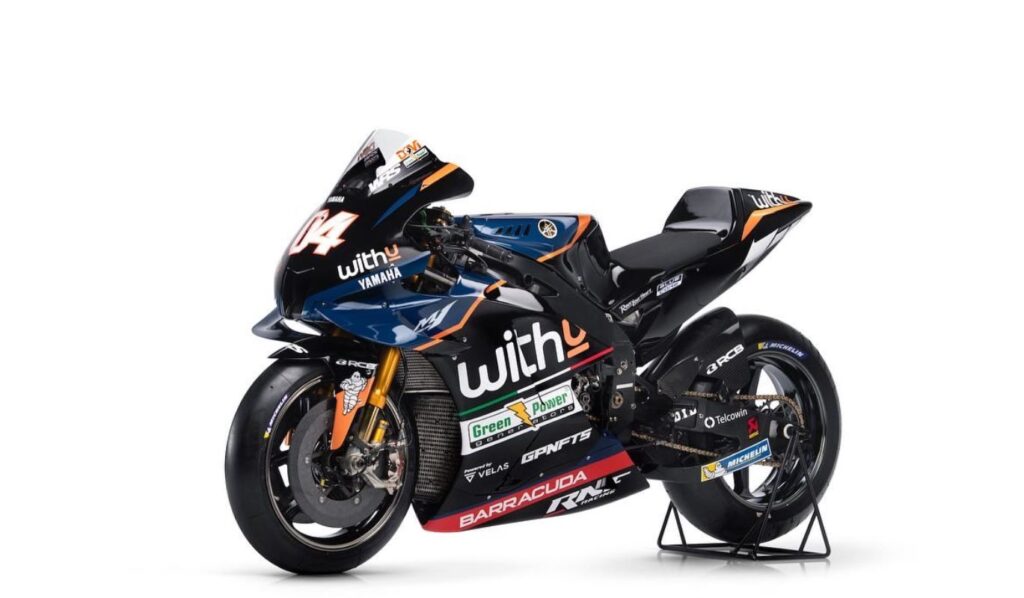
Audience
- Sentiment: Positive
- Political Group: Neutral
- Age Group: 18-35
- Gender: Male
Overview
- The article discusses the new liveries unveiled for the 2025 MotoGP season, highlighting the creativity and branding behind each team’s design.
- Oliver Card provides a detailed critique of the liveries, emphasizing their connection to fans and sponsors.
- Each team’s design reflects a balance of tradition and innovation, showcasing how they differentiate themselves in the competitive MotoGP landscape.
The Colorful World of MotoGP: A Look at the 2025 Liveries
The MotoGP season is always something to be excited about! It’s not just about the incredible speeds and nail-biting races. One of the coolest parts of MotoGP is how each team presents its riders and bikes. Every year, the teams unveil new designs for their bikes—called liveries—and for the 2025 season, all 11 teams have shown us what they’ve got! This year, creative lead Oliver Card from The Race gave a detailed critique of these liveries, diving into what makes each design stand out and how they fit into the stories of their respective teams.
What are Liveries?
Before getting into the specifics, let’s take a moment to understand what a livery is. Simply put, the livery is the color scheme and design that teams use on their motorcycles and gear. It’s like a team’s uniform in sports! Just like how a basketball team might have a unique color and logo, MotoGP teams showcase their identity and brand through their bike designs. The livery not only needs to be eye-catching but also effective in integrating sponsorships—logos and branding from companies that financially support the teams.
A Creative Critique by Oliver Card
Oliver Card’s critique is really interesting, not just because of the designs themselves, but also because of the insights into why they might work or not. For Card, it’s not just about making the bikes look nice. He looks for how each livery connects with the fans and sponsors, and that’s a crucial part of the MotoGP world. This season, no team produced a poorly designed bike, but some liveries were stronger than others. Let’s dive into how each team’s livery stacks up!
Trackhouse Racing: From Suzuki to Bold Statement
Starting off with Trackhouse Racing, they made some serious noise with their new design. Gone is the Suzuki-like look that some fans were used to. Instead, they’ve introduced a bold blue and black color scheme that feels fresh and exciting. This change not only modernizes their image but also gives them plenty of space to display sponsors. The new design may serve a dual purpose: attracting new fans while keeping the existing ones engaged.
Ducati: Darker Shades of Power
Ducati is known for its vibrant red bikes, but for 2025, they have decided to go darker. This new livery feels more menacing, which resonates with fans who enjoy the power and speed associated with Ducati bikes. The shift in design reflects a broader branding strategy, suggesting that Ducati is serious about its competition. By choosing a darker palette, they’re not just making a visual statement; they’re also hinting at a more aggressive approach to racing this season.
Idemitsu Honda: A Refreshing Look
Idemitsu Honda has also revamped its design this year. Their new look focuses on brand integration, meaning that all the elements of the livery work well together rather than clashing. The idea is to create a cohesive and attractive design that showcases their brand values. With Honda’s legacy of success in racing, this fresh look could serve to energize both the team and its supporters as they head into the new season.
Yamaha: Camouflage with a Twist
Yamaha has chosen to keep its camouflage style, which is kind of a signature look for them. However, they’ve added more blue this year, enhancing their racing identity. This change helps them stand out on the track while still paying homage to the traditional colors that fans love. This design balances nostalgia with the demands of the racing world, proving that some things can evolve while still maintaining their core identity.
VR46 Team: Nostalgia Meets Modern Racing
Next up is the VR46 Team, which has made waves not just for its pilot, but also for its unique design. They’ve managed to balance nostalgia with their current lineup, which sounds fantastic on paper, but critics have noted that some design elements clash. This can happen when a team tries to incorporate too many ideas into one design. Nonetheless, fans can appreciate the effort to connect past legends with the new stars of racing.
Aprilia: A Subtle Evolution
Aprilia took a more subtle approach with its livery this season. Instead of a complete overhaul, they’ve opted for an evolution of their current design. This strategy can be effective; by subtly refining their look, they can keep the essence of what fans already love while still signaling growth and change. It’s like finding a balance between old and new—not too drastic, yet noticeable enough to catch the eye.
KTM: A Uniform Look Across the Board
KTM has embraced a sense of uniformity across its teams. This year, their livery appears cohesive, portraying a strong visual identity. This can help build a brand image that’s instantly recognizable to fans. The idea is to create a family of bikes that represent KTM’s values and performance, making it easier for supporters to feel connected to the whole team, not just individual riders.
Gresini Racing: Chrome Elements Shine Bright
Gresini Racing has added some flair with new chrome elements in their livery. This design choice signifies its independence from Ducati, showcasing their individuality. The shiny elements not only grab attention but also give the bike a modern look that hints at innovation and forward-thinking. As they break away, it will be interesting to see how this impacts their performance and fan connection.
Honda: Understated but Effective
Honda has chosen a more understated livery this year, which has raised some eyebrows. While some fans might crave bold colors and patterns, Honda seems to be aiming for a classic look. However, there have been questions about the balance of colors, especially with the presence of the Castrol branding. It’s a risky move—while subtlety can be classy, it’s important that the design doesn’t get lost in the noise of more colorful competitors.
Pramac Racing: A Standout Blend
Perhaps the biggest standout this season is Pramac Racing. Their bike blends elements from both Yamaha and Ducati, symbolizing a long-term partnership between the two. This duality can be appealing to fans of either brand, making it a clever marketing move. Pramac Racing’s design could symbolize a new wave of collaboration in MotoGP, suggesting that the future of the sport might involve more partnership and less rivalry.
Tradition Meets Innovation
In conclusion, the liveries of the 2025 MotoGP season reflect a unique blend of tradition and innovation. Teams are working hard to create designs that not only look good but also resonate with fans and sponsors alike. Each livery tells a story, hinting at the ambitions of the team and how they plan to tackle the challenges of the upcoming races.
With all these changes and creative concepts swirling around, which team’s livery do you think has the most impact? Do you prefer the boldness of Trackhouse Racing, the darker vibe of Ducati, or the subtleness of Aprilia? Share your thoughts in the comments below! Your opinion could be part of the conversation as the new season kicks off!




